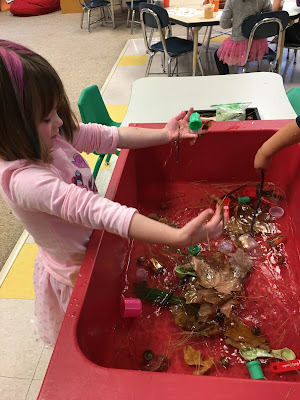 |
| Pre-k Circles |
 |
Kandinsky's Circles
Learning about artists opens children up to thinking about how others live. They learned about Kandinsky's life as a young boy while reading the story "The Noisy Paintbox". We talked about how much he had to practice in order to become so good at his work. |
While painting their own versions of Kandinky's circles the preschoolers gained fine motor practice. They used the small muscles in their hands while experiencing a full turn of the wrist to get those circles just right!
This is a very tricky skill needed for writing!
While looking at Kandinsky's work the preschoolers engaged in many conversations about lines. They noticed straight, bumpy, zig-zag, and spiral lines within his work. Using their own knowledge of lines they used black markers and water colors to create their own version of Composition 6.
 |
| Kandinsky's Composition 6 |
 |
| Pre-k Composition 6 |
Lines extended throughout our classroom as we used many more activities to create familiar lines. Recognizing, naming, and creating lines is a great way to become familiar with the lines and shapes of letters.
 |
| Creating a straight line with bodies |






























































